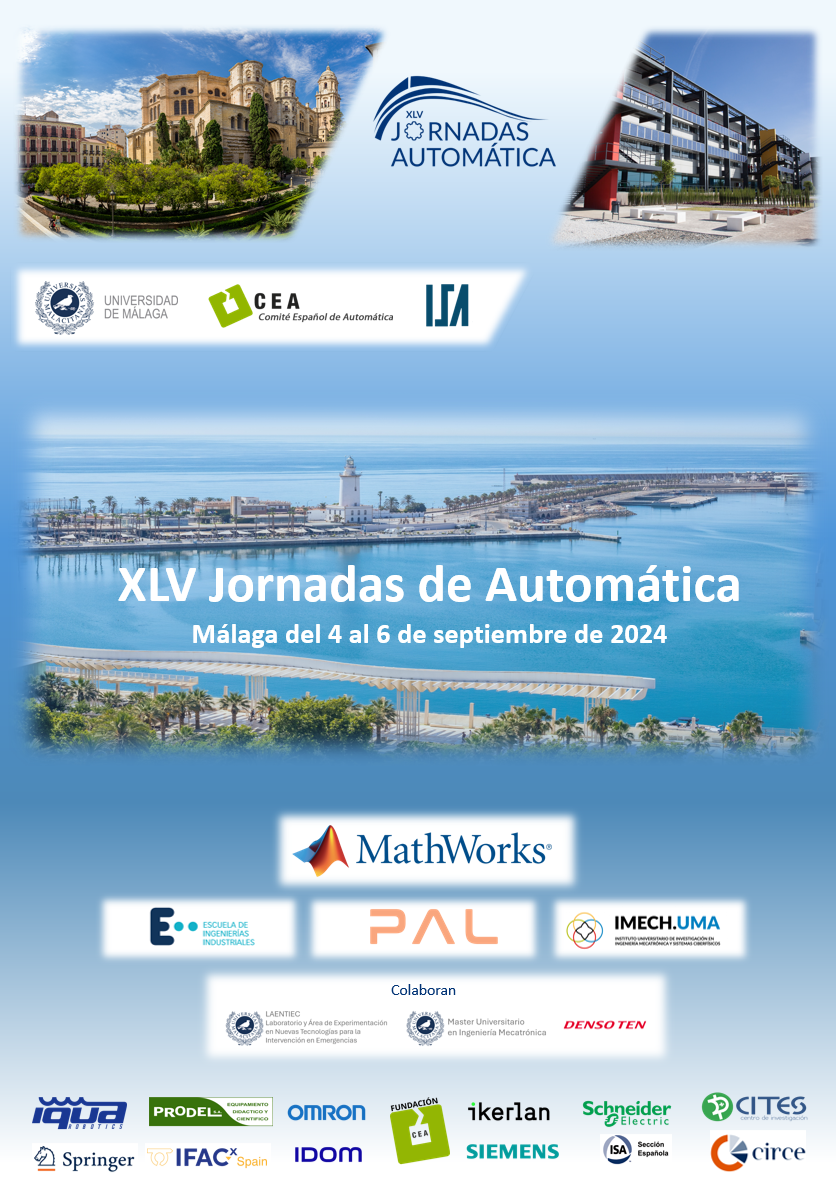Integrator for Musculoskeletal Simulation in Python
DOI:
https://doi.org/10.17979/ja-cea.2024.45.10802Palabras clave:
Tecnología de asistencia e ingeniería de rehabilitación, Bioinformática, Modelización, simulación y visualización de sistemas biomédicos, Dinámica y control, Identificación y validación, Control predictivo de modelos y basado en la optimización, Programación, coordinación, optimizaciónResumen
La detección de la espasticidad es compleja debido a su origen en el sistema nervioso central y los síntomas musculares. Este proyecto desarrolla un método automático para detectar el grado de espasticidad según la escala Ashworth, usando movimientos pasivos, rápidos y suaves en el paciente y midiendo la excitación cerebral. Software como OpenSim y técnicas como Computed Muscle Control (CMC) han facilitado esta tarea ofreciendo el valor de la excitación cerebral dada una trayectoria de movimiento, aunque presentan errores cuando el tipo de movimiento es suave y rápido. Este artículo implementa el integrador Hybrid Computed Muscle Control (HCMC) con el método Runge-Kutta, mejorando la precisión con un error del 3% respecto a CMC. La implementación en Python aumenta la accesibilidad y permitirá crear una base de datos de pacientes virtuales para aplicar técnicas de Machine Learning, avanzando en el desarrollo de nuevos métodos de diagnóstico.
Referencias
Bengio, Y., Simard, P., Frasconi, P., 1994. Learning long-term dependencies with gradient descent is difficult. IEEE Transactions on Neural Networks 5 (2), 157–166. DOI: 10.1109/72.279181
Burridge, J. H., Wood, D. E., Hermens, H. J., Voerman, G. E., Johnson, G. R.,van Wijck, F., Platz, T., Gregoric, M., Hitchcock, R., Pandyan, A. D., 2005. Theoretical and methodological considerations in the measurement of spasticity. Disability and Rehabilitation 27, 69–80. DOI: 10.1080/09638280400014592
Delp, S. L., Anderson, F. C., Arnold, A. S., Loan, P., Habib, A., John, C. T., Guendelman, E., Thelen, D. G., 2007. Opensim: Open-source software to create and analyze dynamic simulations of movement. IEEE TRANSAC-TIONS ON BIOMEDICAL ENGINEERING 54. DOI: 10.1109/TBME.2007.901024
Delp, S. L., Loan, J. P., 2000. A computational framework for simulating and analyzing human and animal movement. Computing in Science and Engineering 2. DOI: 10.1109/5992.877394
Howell, T. A., Cleac’h, S. L., Br ̈udigam, J., Kolter, J. Z., Schwager, M., Manchester, Z., 2023. Dojo: A differentiable physics engine for robotics. DOI: 10.48550/arXiv.2203.00806
Inai, T., Takabayashi, T., Edama, M., Kubo, M., 2020. Algorithm to compute muscle excitation patterns that accurately track kinematics using a hybrid of numerical integration and optimization. Journal of Biomechanics 107. DOI: 10.1016/j.jbiomech.2020.109836
mpmath development team, T., 2023. mpmath: a Python library for arbitrary-precision floating-point arithmetic (version 1.3.0). http://mpmath.org/
Thelen, D. G., Anderson, F. C., 1 2006. Using computed muscle control to generate forward dynamic simulations of human walking from experimental data. Journal of Biomechanics 39, 1107–1115. DOI: 10.1016/J.JBIOMECH.2005.02.010
Wakeling, J. M., Febrer-Nafr ́ıa, M., Groote, F. D., 6 2023. A review of the human to develop muscle and musculoskeletal models for biomechanics in the last 50 years. Journal of Biomechanics 155, 111657. DOI: 10.1016/J.JBIOMECH.2023.111657
Descargas
Publicado
Número
Sección
Licencia
Derechos de autor 2024 Alicia García-Mascaraque Herrera, Ignacio Montesino, Juan G. Victores, Carlos Balaguer, Alberto Jardón

Esta obra está bajo una licencia internacional Creative Commons Atribución-NoComercial-CompartirIgual 4.0.





